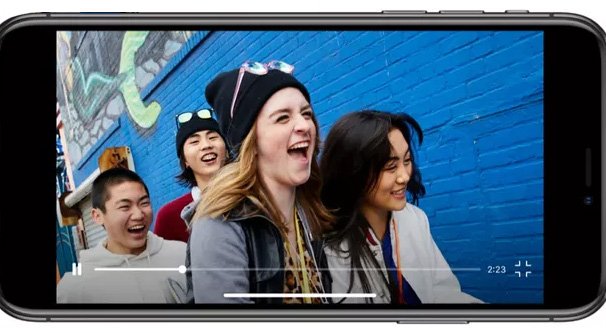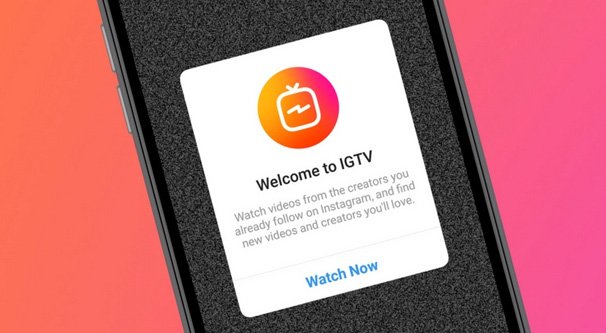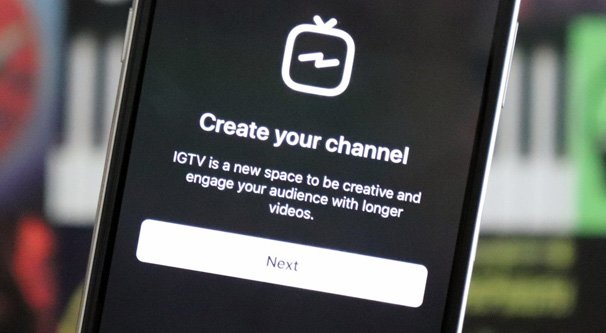Which is Better: IGTV or Regular Instagram Videos?
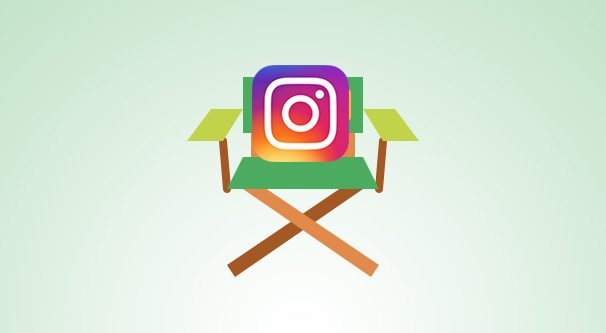
Over the last few months, you may have noticed something new coming up in your Instagram feed. These new posts are videos, but they aren’t full videos; they’re previews. In fact, they’re previews for Instagram’s closely connected and related service, IGTV.
IGTV is aimed at being something a little like a cross between Instagram and YouTube. Mobile-designed and mobile-led, it’s aimed at vertical format videos, rather than the horizontal format of the traditional YouTube video. It’s connected to the Instagram platform, but it’s not the same thing; it’s an app for its own ecosystem.
The Problems With IGTV
Instagram is clearly pushing IGTV as much as they can. Putting previews of IGTV videos in Instagram feeds is basically advertising. It’s a plea to Instagram users: please use our video platform.
IGTV has been slow growing, for a few different reasons. For one, while it’s linked to Instagram, it’s not Instagram. It has a different user base, a different app, and different requirements for posts. You may use your Instagram account to access it, but it’s not the same platform. For a long time, it has suffered under low viewership numbers, and this latest push is meant to speed up adoption.
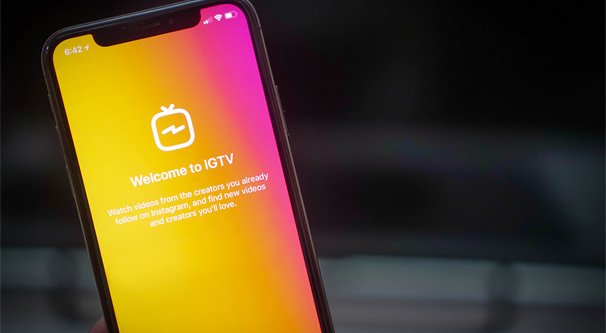
It’s working. It remains to be seen just how effective this latest push will be, but it’s clear that Instagram isn’t going to retire IGTV, they’re going to keep investing in it. Since they want it to be a YouTube-killer, it’s no surprise that they’re going to explore every avenue they have.
Why was adoption so slow? The lack of initial audience coupled with the difficulty in producing video, most likely. In fact, most video tutorials and presets in video editing software focus on the YouTube or movie format; widescreen, high resolution, meant to be viewed on a desktop platform or a TV. IGTV, meanwhile, focuses on vertical videos.
Vertical videos may be more ideal for mobile audiences, that’s true. You know what isn’t formatted for vertical videos? Any non-mobile video camera. Video editing presets. Video editing habits. It’s surprisingly tricky to record high definition vertical video. For brands and users who already don’t do much with video, it’s just such a higher barrier to entry compared to something like YouTube that it’s almost not worth it.
IGTV also has one barrier to adoption for content creators and some brands; a lack of monetization options. Stores that sell products or merch can refer people from IGTV to their website, but there’s no direct monetization. YouTube runs ads and pays creators, albeit a distressingly low amount. IGTV does not pay creators at all, and relies on their own ability to monetize themselves off-site.
IGTV also lacks any sort of real search feature. Since searching and finding content on YouTube, and even on Instagram via hashtags, is such a big part of the ecosystem, it’s weird that IGTV doesn’t have something comparable. They justify it because they want the platform to be a sort of in-the-moment experience where you view content from creators you follow as it appears. In other words, they want it to be more like the TV part of their name.
The problem with this, of course, is that it’s not what people actually want. YouTube, on-demand streaming services, and even the ability to just buy media are all extremely popular specifically because people don’t like having to tune in at specific times to see content they want to see, and the feeling of missing out on something can be devastating when you’re an ardent follower.
With episodic content exploding on Stories, the fact that the Instagram TV-style video service inhibits the very concept is incredible. Another possible detriment, similar to the evanescent nature of Stories, is that IGTV isn’t really indexed in search. It’s just difficult to find any IGTV content if you’re not already on IGTV and following the creator.
That’s not to say that IGTV is without benefit. There are some pretty strong reasons to use IGTV, if you can.
The Benefits of IGTV
There are definitely some tangible benefits to IGTV. First and, perhaps in a limited fashion, the platform is still new. If you get into it now, and I mean right now, you’re going to be one of the early adopters. This means you’re often well positioned to capture an audience as it grows, rather than having to fight more established competition. It’s easier to be a thought leader on a new platform.
That’s not to say it’s easy. You definitely have to grow into your role, keep growing as the platform grows, and put thought and effort into your innovations. In other words, you need to actually BE a thought leader. It’s just easier when there’s comparatively little competition.
In addition, IGTV has some other benefits over, say, YouTube or Instagram itself.
When compared to YouTube, IGTV is natively mobile. It’s formatted specifically to engage with a mobile audience, and if your brand can do so, it’s a great advantage for you.
IGTV videos can be up to 10 minutes long for most creators, or up to an hour long for verified creators. This isn’t much compared to YouTube, but compared to video posts or videos in stories on Instagram, it’s a lot more space and flexibility with your videos.
IGTV is also a bit of a gated platform, in that you can’t just take videos you post on other sites and throw them up on IGTV. All of those creators with thousands of videos on YouTube still have to produce something new for IGTV, specifically because of the vertical video format. Vertical videos are posted on YouTube all the time, with various filter tricks to fill the dead space to the sides. Horizontal videos can’t be easily posted to IGTV the same way.
Instagram stories are short-lived by intention, and Instagram video posts are rather mundane and limited. IGTV is much more flexible in terms of the kind of content you can post and the longevity of that content.
While I’ve mentioned the stand-alone IGTV app as a detriment before, it can also be a benefit if you have engaging content. There are few distractions on IGTV. There are no ads to draw users away, no other actions a user takes like they can on Instagram; it’s just a feed of content you can capture your users in.
If nothing else, IGTV is a good platform for intimate, close-up style videos. Since it’s a smaller platform and the connection with your audience is more immediate, it’s a good place for a deeper connection than what you might get on other formats.
Which Should You Choose?
You’ll note that most of what I’ve mentioned above is comparing IGTV to YouTube and to Stories, and not to regular Instagram video posts.
There’s a reason for that, and it’s “Instagram video posts kind of suck.” They don’t actually suck, but they’re pretty much just normal Instagram posts with a short video attached instead of a photo or series of photos. There’s nothing that makes them stand out compared to normal posts, other than the audio, I suppose.
Stories have more impact on Instagram than normal video posts. Stories have their own notifications and their own display, and they can be a lot more robust than basic videos. Normal videos just aren’t really worth talking about.
That said, if you want to choose between IGTV and normal video posts, I would 100% go with IGTV. I don’t consider that really the question at issue, though.
Should you choose IGTV or Instagram Stories? This is a much trickier question. Stories are very highly engaging and, while transient, tend to be quite valuable to audiences and brands alike.
On the other hand, they fill different roles. Stories are temporary and are best used for short episodic content, product announcements, and engagement bait. IGTV, meanwhile, is best used to create a backlog of content users can sit and watch in sequence, as endlessly as you let it be.
What about IGTV versus YouTube? Frankly, this isn’t an easy decision. They serve such different roles, with different styles of content, that it’s hard to compare them. Normally I would just say to use them both, but you can’t really repurpose content from one to the other very easily.
In this case, YouTube is probably the winner. YouTube videos are much more visible in search, they have a much larger audience, and you can get paid for them once you reach certain monetization thresholds. Sure, those can be a pain to reach, but it’s at least possible, unlike IGTV.
How to Make Use of IGTV
I think IGTV isn’t a platform for everyone. Certain brands and influencers will get a better return from it than others. Basically, use it if you have a way to produce narrow, engaging content for an intimate audience. Don’t use it if you intent to produce nothing but commercials.
If you’re interested in IGTV after all of the above, I applaud you. I’m going to give you tips, but I’d also like your stories, once you’ve used it for a while. Tell me what you’re doing and how it’s going in the comments.
To actually use IGTV, the first thing you need to do is make your channel. Thankfully, that’s very easy. Just log into the Instagram app, tap the IGTV icon in the corner, and then the settings icon. Tap to create a channel and follow the prompts. You can also make an IGTV channel from the web by clicking your profile and clicking the IGTV tab.
Uploading to IGTV is pretty simple. It needs to be on your phone before you can upload it, but you should be used to that when using Instagram in any capacity.
- It’s highly recommended that you share your preview of your IGTV video to Instagram. These 60-second clips are previews of the full video and give Instagram users the ability to tap to keep watching on IGTV, which ropes them into your channel. It’s probably the single best thing you can do to boost your IGTV viewership.
- When actually producing IGTV videos, remember the technical specifications. Files need to be MP4s encoded in H.264 with AAC audio. You want it a vertical video with a 9:16 aspect ratio. 30FPS videos are ideal, since 60+ will be downscaled. Videos need to be less than 10 minutes and less than 650 MB.
- You will also be asked to upload a cover photo for your video. This works like a thumbnail does on YouTube; a still from the video or a cover you edit to compel people to click to watch. Unlike YouTube, however, you can’t edit your cover photo once you’ve uploaded it. Make sure to create something compelling and error-free so you don’t regret it later.
- I also highly recommend making sure your video works for people without sound. If it’s just you talking to the camera, subtitle it. If it’s music, well, you may be out of luck. Remember that a lot of people watch with their devices muted, so you want to capture as many of those people as you can.
- Don’t forget that even though IGTV is stand-alone for the most part, you can still write a description and you can still include hashtags in it. Yes, I know I said that search doesn’t work on IGTV yet, but it’s still a good idea to write descriptions with hashtags ahead of time, so when search DOES get implemented, you’re prepared.
What are your tips for making the most of IGTV?





